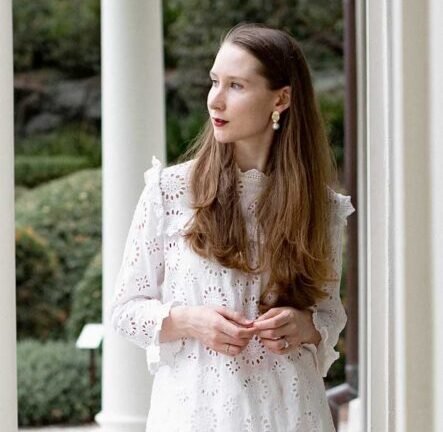
Fashion in 2025: Where Creativity Meets Consciousness
Fashion has always been more than clothing. It’s a language, a cultural mirror, and, for many, a form of personal empowerment. In 2025, the industry is undergoing one of its most transformative periods, blending artistry with technology, heritage with innovation, and aesthetics with ethics.
Trends are moving faster, consumer expectations are higher, and global influences are more visible than ever. Yet at the same time, there’s a counter-current: a push toward slow, meaningful design that tells a story.
This is the landscape shaping style today — a complex interplay of creativity, commerce, and conscience.
1. The Shift Toward Sustainable Wardrobes
A decade ago, sustainability was more of a niche concept in fashion. Now it’s the expectation. From fabric sourcing to manufacturing methods, consumers are asking hard questions:
-
Where was this made?
-
Who made it, and under what conditions?
-
What happens to it at the end of its life?
Designers are answering with organic cotton, recycled textiles, biodegradable dyes, and even lab-grown materials. Circular fashion models — where clothing is designed to be reused, repaired, or recycled — are becoming mainstream.
The interesting twist? Sustainability has evolved beyond earthy tones and simple cuts. Now, eco-conscious pieces can be bold, vibrant, and runway-ready.
2. Digital Fashion and Virtual Runways
The digital era has reshaped how style is presented and consumed. In 2025, fashion shows often happen in hybrid form — a small in-person audience paired with a large-scale online experience, complete with interactive 3D visuals.
Digital-only garments, once considered a novelty, now have practical applications. Influencers can “wear” them for photoshoots without physical production, brands can test designs before manufacturing, and gamers integrate high-fashion skins into their virtual worlds.
While this doesn’t replace physical clothing, it offers a way to explore design without the environmental footprint.
3. Revival of Craftsmanship
While technology is racing ahead, many designers are looking back — not for nostalgia, but for depth. Hand-weaving, embroidery, natural dyeing, and artisanal leatherwork are experiencing a resurgence.
Consumers are beginning to see value in slow production. A handmade jacket that lasts twenty years is no longer seen as an indulgence, but as a better investment than five cheaply made pieces.
This trend also ties into cultural heritage — with designers drawing from traditional textiles and craftsmanship of their regions, giving them modern silhouettes and global appeal.
4. Inclusivity as the New Standard
The definition of “fashion for all” has expanded. Runways now feature a diversity of body types, ages, genders, and cultural backgrounds. Adaptive fashion — designed for people with disabilities — has moved beyond specialty lines into mainstream collections.
Representation is not just about visibility; it’s about participation. More models, stylists, and creative directors from underrepresented groups are shaping the industry’s direction.
5. Personalisation Through Technology
Customisation has become easier and more accessible. Online tools allow customers to adjust colors, fabrics, and cuts before ordering. Body scanning technology ensures a better fit, reducing returns and waste.
High-end brands are also experimenting with on-demand production — making garments only after they’re ordered, which cuts down on unsold inventory.
This shift is turning fashion from a mass-production mindset to one that feels more personal and intimate.
6. The Rise of Fashion Rentals and Resale
The stigma around second-hand fashion has faded. Resale platforms, from global giants to boutique consignment sites, are thriving. Clothing rentals, once limited to formalwear, now cover everyday outfits, travel wardrobes, and even maternity wear.
For consumers, it’s a way to enjoy variety without constant purchases. For brands, it’s a chance to extend the lifecycle of their products and build customer loyalty.
7. Streetwear’s Evolving Influence
Streetwear, once defined by hoodies, sneakers, and oversized silhouettes, has matured into a broader style language. In 2025, we see tailored streetwear, luxury sneaker collaborations, and hybrid looks that merge sportswear with high-end fabrics.
Its cultural influence remains strong, driven by music, art, and online communities. Streetwear has become not just a look, but an ethos — one that values authenticity, self-expression, and community connection.
8. The Role of Social Media Creators
Fashion journalism once meant glossy magazines and elite critics. Today, style inspiration spreads through short videos, livestreamed thrift hauls, and Instagram carousels.
Independent creators wield massive influence, often launching their own labels or collaborations. This shift has democratized fashion storytelling — but it has also made trend cycles faster, creating challenges for brands that value longevity over virality.
9. Balancing Fast and Slow
Fast fashion still exists, but consumer awareness is growing. Many shoppers now mix:
-
Fast fashion basics for affordability.
-
Slow fashion investments for quality.
-
Second-hand treasures for uniqueness.
The blending of these approaches reflects a more conscious consumption pattern — one that’s flexible, practical, and still stylish.
10. Looking Ahead
The next few years will likely bring even more integration between fashion and technology. Expect clothing with embedded sensors for health tracking, fabrics that adapt to temperature, and digital passports for each garment’s origin and care history.
Yet amid all the innovation, the core of fashion will remain the same: a human desire to express identity, to belong, and to stand out — sometimes all at once.
Final Thoughts
Fashion in 2025 is not a single narrative. It’s a series of overlapping stories: of sustainability, inclusivity, digital innovation, and creative heritage. The industry is learning to move fast without forgetting its roots, to embrace technology without losing the human touch, and to inspire beauty while caring for the planet.
For designers, brands, and consumers alike, it’s a moment of choice — to decide not only what to wear, but what kind of industry we want to support.
